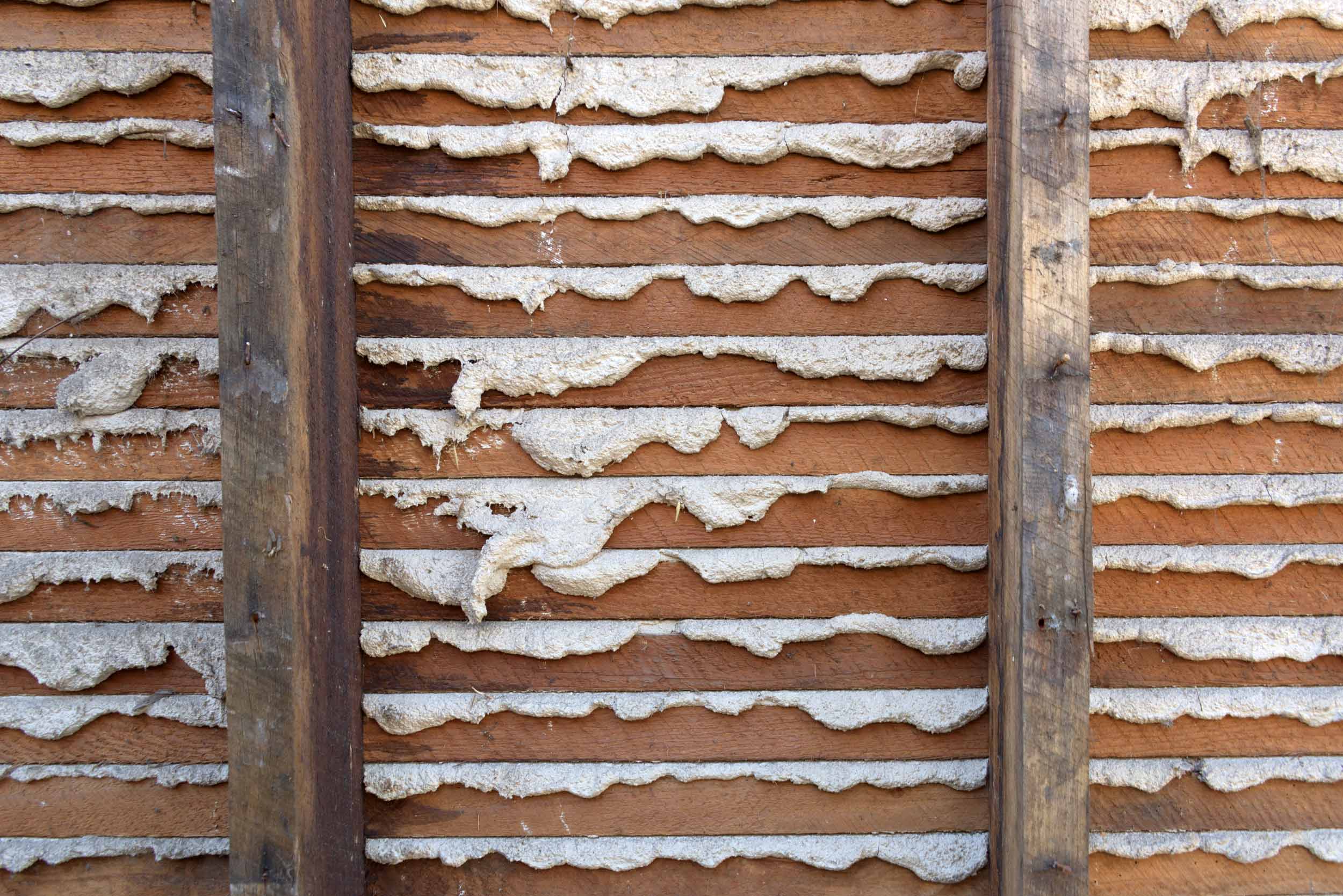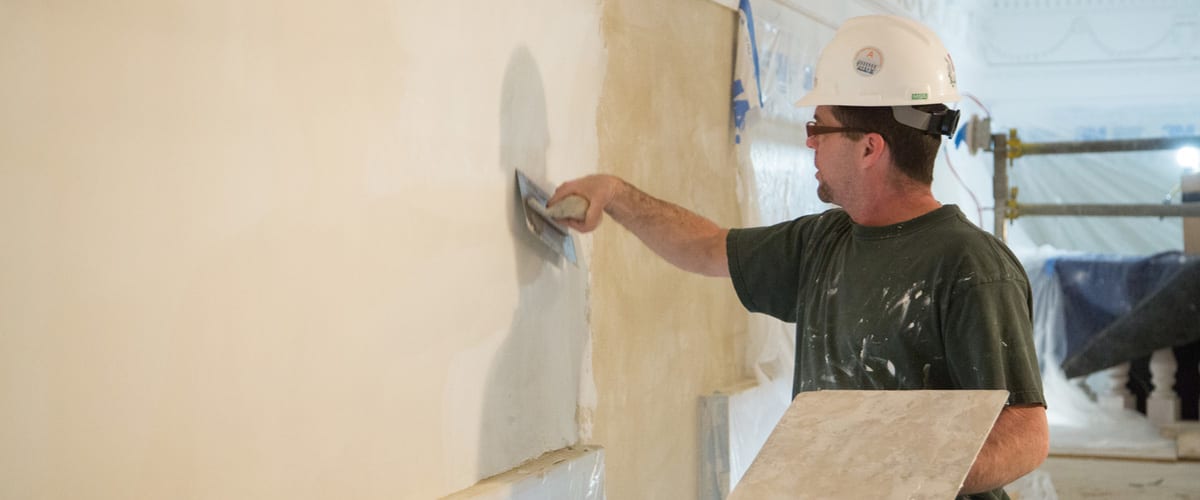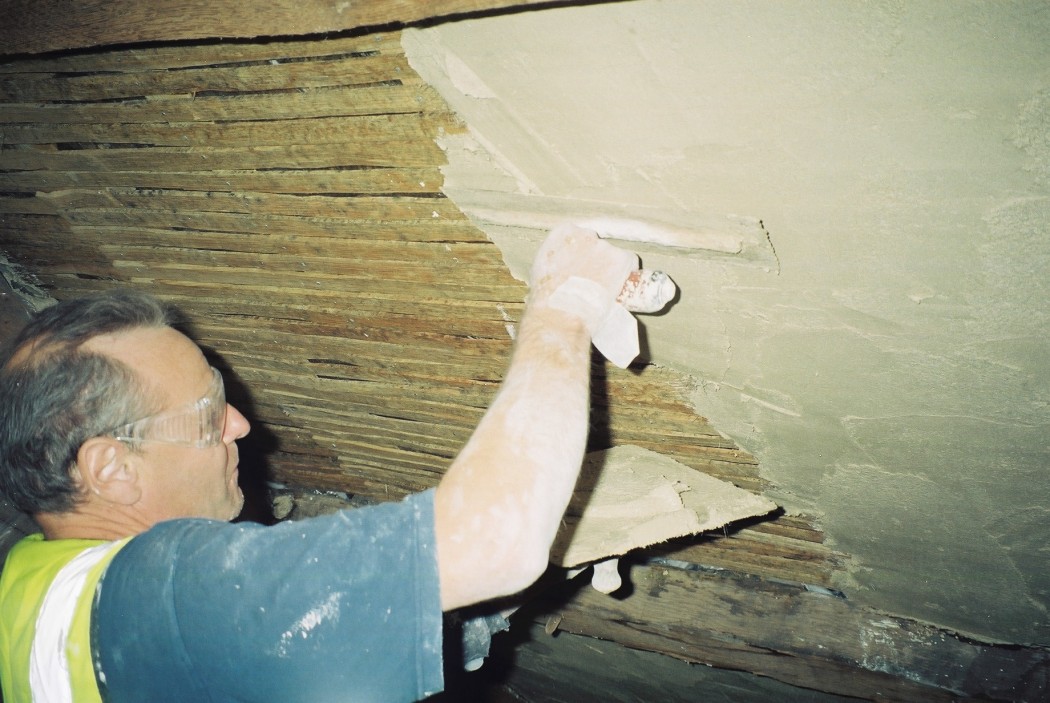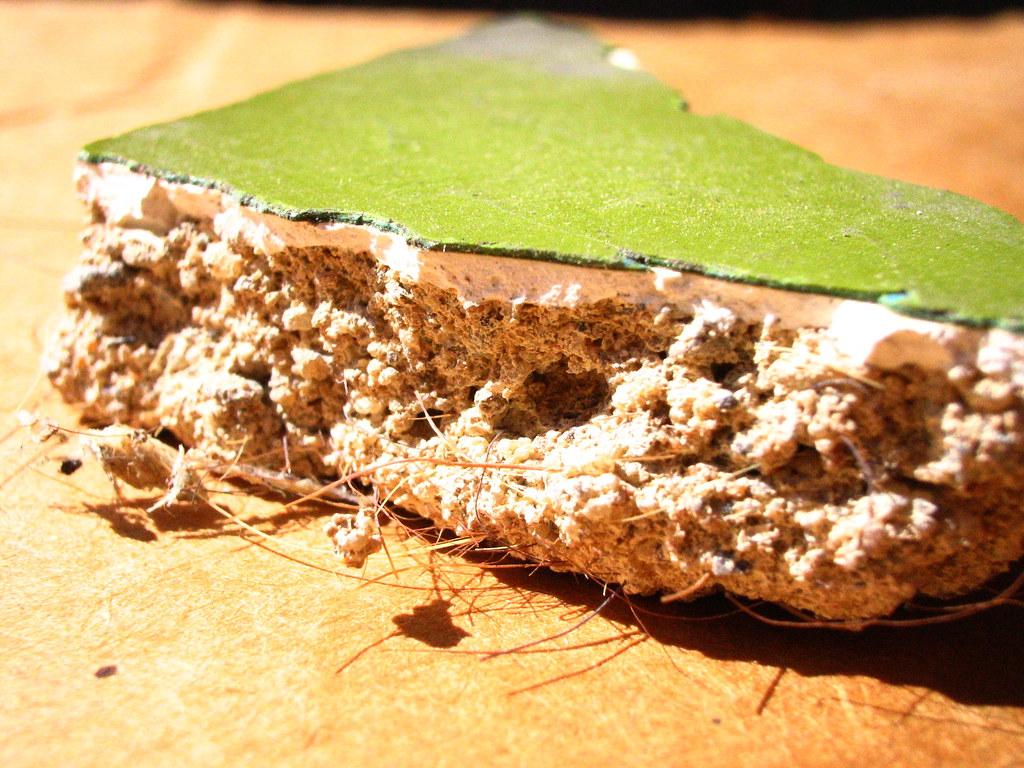
Horsehair Plaster Filling Holes Smoothing And Painting YouTube
Horsehair plaster is a type of plaster made from a mixture of lime, aggregate, water, and animal hair (horsehair being very commonly used), which is then applied onto laths (thin flat strips of wood nailed to the studs.) The mixture created a gritty, textured look and feel that has been used as far back as the 1800s. It is hard to find this type of plaster in newer, more modern homes since.

Horse Hair Plaster Walls In Home Renovation Keep, Cover, or Remove? — Degnan DesignBuildRemodel
Horsehair plaster is made out of varying combinations of water, lime, plaster, sand, and animal hair - you guessed it - most often horsehair. Sometimes the hair from other animals such as oxen, donkeys, and goats was utilized instead of horsehair.
Plaster in an Old House, Old Closets, Horse hair plaster Shore Side Farm House
Lath and plaster, often known as horsehair plaster, is a type of building material often used in ancient or historical structures. The use of such techniques has all but disappeared in recent years. Dry wall started to become widely used as an alternative in the 1950s.

How To Hang Pictures On Horsehair Plaster Walls References do yourself ideas
Much obvious from its name, the Horsehair plaster contains Animal hair in it due to which it is known as the Horsehair plaster. Hair from the mane and tail of the horse are used in these plasters. The horsehair in the plaster provides a greater binding force and acts as a bridging agent. It controls the shrinkage of the plaster and holds the.

Horse hair in plaster Sonia Marcus Flickr
Horsehair plaster is a type of plaster made with lime, dust, animal hair, water, and aggregate that's used to make plasterboard. It is widely used in furniture, walls, and ceilings, and can be found in houses all over the world. The dust made by this type of lime is as fine as the dust created by drywall, but it can still trigger allergy.

History and Use of Horsehair Plaster Canning Liturgical Arts
Powdered lime, sand, and fibers (often horsehair) were the traditional ingredients used in the creation of lath and plaster walls. A typical lath and plaster wall required a minimum of three coats.

Historic Plastering using Traditional Sand Lime Horsehair & Wooden Lath Materials Plaster
When the roof leaked on this next house, the homeowner saw a bulge in his horsehair plaster ceiling. He poked it with a stick and a section of ceiling came crashing down at his feet. The roofer fixed the leaky roof, then I fixed the ceiling and painted the room. In this next room the walls were pretty solid.
HORSE HAIR PLASTER HORSE HAIR PLASTER
The purpose of the horsehair itself was to act as a bridging agent, controlling the 'shrinkage' of the plaster and helping to hold the plaster 'nibs' together, the 'nibs' being crucial to the performance and longevity of the plaster. It was not uncommon for other animal hair to be used in plaster mixtures, but the long hair found on.

Horsehair Plaster LOPCO Contracting RI
A typical lath and plaster wall consists of a minimum of three coats of plaster creating a dense wall, rock hard, and nearly one inch thick. When combined with the lath, it's closer to an inch and a quarter thick. Considering that the typical drywall is 1/2" thick, lath offers better sound control. Older homes are often quieter than new homes.

Traditional lath and plaster wall with horse hair in old Cotswold farm house UK Stock Photo Alamy
Horsehair plaster is commonly used in older South Shore and Boston-area homes and is comprised of lime, aggregate, and sometimes animal hair. Homebuilders used horsehair in the early 1900s to bind the plaster mixture together and add strength. Underneath all types of antique plaster, you'll find closely spaced strips of wood nailed to the.

LIme based HORSE HAIR PLASTER Ceiling Repair YouTube
"Horsehair" plaster rarely contained actual horsehair. The long hair from horses' manes and tails was considered too smooth for the best plaster. Instead, shorter hair from the horses' bodies was used, in addition to pig hair, cow hair, or vegetable fibers. Modern plasters often use synthetic fibers or fiberglass.

Horse hair for traditional plaster plastering hair
Horsehair Plaster. Asbestos. Horsehair plaster is costly. Asbestos is cheaper than horsehair plaster. It takes time for application, and you will have to put more effort into doing it correctly. Asbestos is simple to use and apply. You cannot apply horsehair plaster quickly. Asbestos is easy to use.

Warm study. USING HORSE HAIR PLASTER. LIME BASED. OLD HOUSE YouTube
Horsehair is the long hair growing on the manes and tails of horses. It is used for various purposes, including upholstery , brushes , the bows of musical instruments, a hard-wearing fabric called haircloth , and for horsehair plaster , a wallcovering material formerly used in the construction industry and now found only in older buildings.

damaged old Horse Hair plaster. Repair. What to use? YouTube
Healthier Livestock and Pastures - Lightweight Towed Manure Collectors. The Perfect Maintenance Groomer and Manure Collector for your Farm, Ranch or Home.

chunk of horsehair plaster Pre1930s plaster walls feature… Flickr
Save time and shop online for your kitchen. Free UK delivery on eligible orders! Great prices & huge selections

How To Hang Pictures On Horsehair Plaster Walls CreativePersonSpecials
Lath and plaster is a building process used to finish mainly interior dividing walls and ceilings. It consists of narrow strips of wood. Traditional lime based mortar/plaster often incorporates horsehair which reinforces the plasterwork, thereby helping to prevent the keys from breaking away. Historical transition